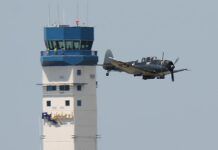
AVweb’sGeneral Aviation Accident Bulletinis taken from the pages of our sister publication,Aviation Safetymagazine, and is published twice a month. All the reports listed here are preliminary and include only initial factual findings about crashes. You can learn more about the final probable cause in the NTSB’s website atwww.ntsb.gov. Final reports appear about a year after the accident, although some take longer. Find out more aboutAviation Safetyatwww.aviationsafetymagazine.com.
August 1, 2018, Big Creek, Idaho
Champion 7GCBC Citabria
At about 1215 Mountain time, the airplane veered off the runway and collided with a fence during the landing roll. The airline transport pilot and passenger were not injured. The airplane sustained substantial damage. Visual conditions prevailed.
A witness observed the airplane make a normal landing aligned with the runway centerline. His attention was momentarily diverted and when he looked back, the airplane was established in a gradual left turn, maneuvering at a slow speed in a three-point attitude. The airplane then collided with the airport perimeter fence and came to rest about 600 feet past the touchdown point. The pilot stated that, despite application of brakes and right rudder, the airplane veered off the runway. Damage included the right wing strut.
August 2, 2018, Lopez Island, Wash.
Mooney M20J 201
The airplane impacted terrain at about 1705 Pacific time while approaching to land. The pilot and flight instructor were fatally injured. Visual conditions prevailed for the flight review.
A witness in another airplane observed the accident airplane at about 300 feet AGL and 0.5 nm north of the airport. It appeared to be turning left onto the base leg for Runway 16. The accident airplane’s left turn progressed into a 45-degree bank that continued to increase until the airplane entered a nose-down dive and made at least one complete revolution around its roll axis before disappearing from the witness’s line of vision. Orientation between the airplane’s initial impact point and main wreckage was 126 degrees magnetic; the distance was about 60 feet.
August 3, 2018, Dallas, Texas
Columbia LC41-550FG Columbia 400
At about 0810 Central time, the airplane departed the taxiway and collided with a taxiway sign after landing. The private pilot was not injured; the airplane sustained substantial damage. Day visual conditions prevailed. The pilot later stated the flight, landing and taxi operations were normal until a right turn from one taxiway to another. The airplane did not respond to full application of right rudder and brake pedal. Additionally, the left brake pedal did not slow the airplane. The airplane departed the taxiway and went into a grass median where the right wing impacted a lighted taxiway sign.
Examination revealed that both right and left main landing gear brake pads were worn excessively, which allowed brake fluid to leak past their respective O-ring seals when the cockpit brake pedals were depressed. Additionally, the right main tire was flat and exhibited rotational scoring where the wheel rim had contacted the tire.
August 4, 2018, Talkeetna, Alaska
de Havilland Canada DHC-2 Beaver
The airplane was substantially damaged at about 1753 Alaska time when it impacted steep, high-altitude, snow-covered terrain in the Denali National Park and Preserve. The commercial pilot and four passengers sustained fatal injuries. Visual conditions prevailed for the Part 135 on-demand air tour flight.
The operator’s flight-following data showed the flight progressing toward Talkeetna on a southeasterly heading, then terminating near a knife-edge ridge above the Kahiltna Glacier. At 1753, the first alert from the accident airplane’s ELT was received. At 1756, the operator was alerted the accident airplane’s satellite tracking had stopped moving. At about 1800, the accident pilot made a satellite phone call to the operator, stating the flight had impacted a mountain and they needed rescue. After a subsequent call in which the accident pilot stated he was trapped in the wreckage and there were two fatalities, there was no further contact.
Continuous poor weather conditions in the area prevented access to the crash site by SAR assets from the National Park Service (NPS), the Alaska Air National Guard, the Alaska Army National Guard and the U.S. Army. Early on August 6, the crew of the NPS high altitude rescue helicopter located the airplane wreckage in a crevasse at an altitude of about 10,920 feet MSL. After two attempts by an NPS mountain rescue ranger to access the accident site while suspended beneath a helicopter using a long line, all aboard were confirmed deceased. The NPS determined recovery will not be attempted due to the steepness of terrain, ice crevasses, avalanche danger and the wreckage’s instability.
August 4, 2018, Ponca City, Okla.
Extra EA-400
At about 1045 Central time, the airplane impacted terrain. The private pilot and the four passengers were fatally injured; the airplane was destroyed. Visual conditions prevailed.
A witness saw the airplane depart from Runway 17. He reported the airplane was slow to climb as it departed to the south. He watched the airplane turn right and fly to the north. Another eyewitness reported that the airplane impacted a soybean field. A post-impact fire ensued. All major airplane components were found at the accident site.
This article originally appeared in the November 2018 issue ofAviation Safetymagazine.
For more great content like this,subscribe toAviation Safety!


































